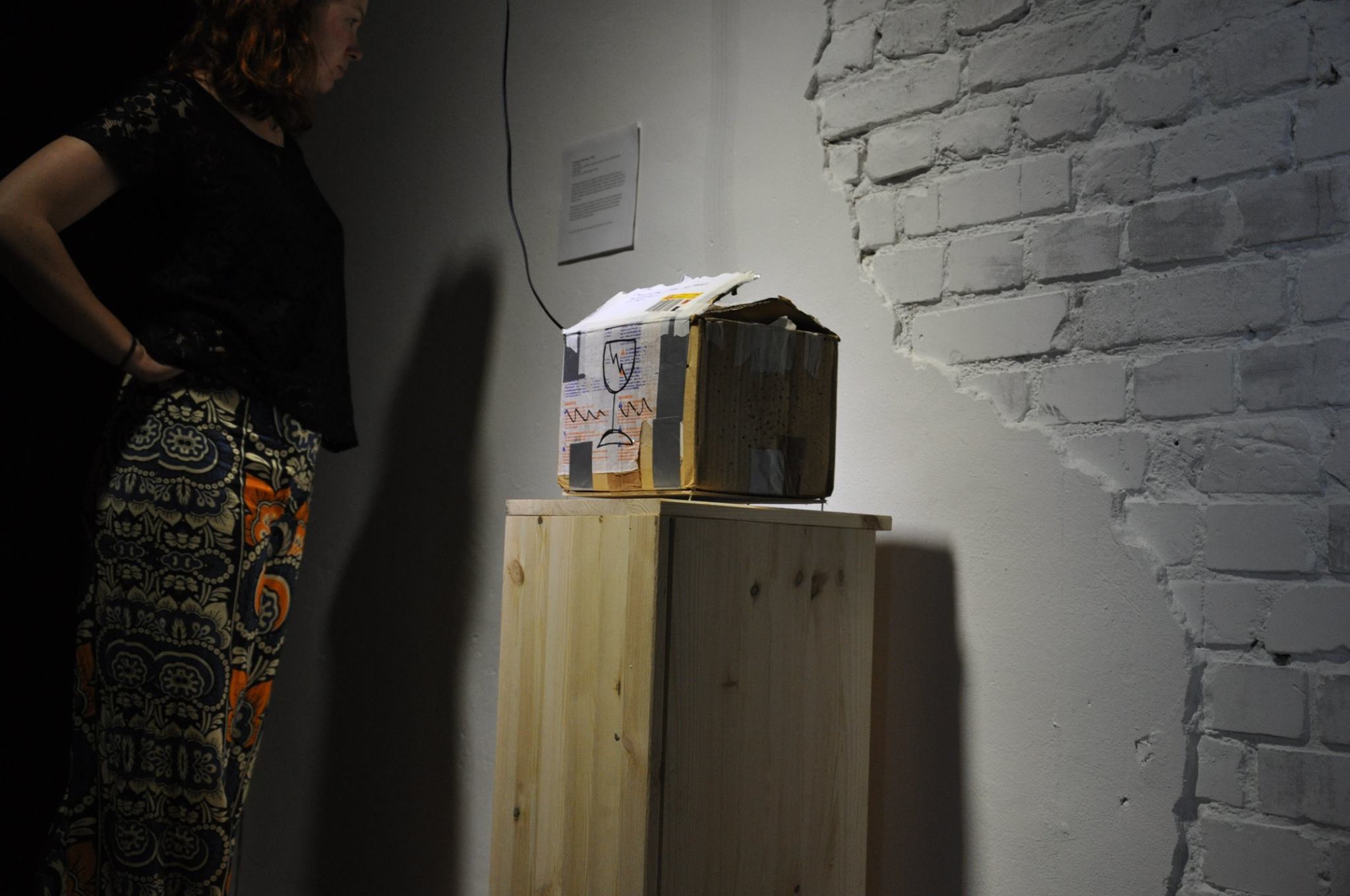Device : Space : Unknown
Bea Stach and Bram Kuypers
EHIBITION DURATION: 27_MAY_16 - 7_JUNE_16
//////////////////////////////////////////////////////////////////////////////////////////////////////////////////////
Bram Kuypers
A device built inside a box, “The Travelogue", will be sent through the post, from Schloss Ringenberg, Hamminkeln (DE), finding its way to the Aether to be unpacked... Alas! This is NO ORDINARY PACKAGE. This Travelogue device records all sound from the moment it has been packed, to the moment it arrives!
Bram’s special device, The Travelogue, is one that has travelled a journey for you, and will be able to communicate in some way, what happens inside the machines. The opening night, Bram presses rewind, and PLAY.
Bram is the recipient of the 2015 Heij-Konijn fonds, a grant for realisation of his project Travelogue. Bram is revolving around ideas concerned with studies of landscapes, that we as humans, cannot perceive.Landscapes might seem fixed on maps, but are made up of constantly moving elements. A bird flies, the wind blows, time ticks on. The idea of landscape: in its ambiguous nature, is a space that is constantly changing… if you move through it yourself, what you see now… is not what you just saw.
“We use incredibly sophisticated devices to plot the earth, the universe, to literally create an ‘image’ of our surrounding, but this aspect of creating is very important, it is not ‘us’ looking at stars, we look through the ‘eyes of a device’. The device makes a translation.” Bram Kuypers, 2016.
![]()
///////////////////////////////////////////////////////////////////////////////////////////////////////////////////
Bea Stach
Bea Stach is a visual artist working with a conceptual approach. For Device - Space - Unknown at Aether she is invited to show her work entitled: Dust, Berlin.
Dust, Berlin is presented as an interactive java-application, showing 10 layers of 10 hours worth of accumulated dust particles.
Collected and named aptly depending on which city the piece is shown in, the dust that settles on 10 glass plates during Bea’s collecting period, ›freezing‹ time and space. Bea works with a technique of scanning dust layers, creating a 3-dimensional, digital ‘space’, using applications which allow a viewer to actively navigate through, this unusually tiny and invisible element of our environment.
With the mouse, she invites you to pan around, discover, zoom in and out of the tiniest particles around us. What do you feel these tiny particles looks like? … Do the dust matter of our environments have a very close resemblance to something? Come and play for yourself, through the space-dust.
Starting points for Bea’s artistic practice often are sets of self-generated or collected data which can be language, text, images, sound, objects etc. The subject matter of the data can be anything such as scientific observations or phenomenons of our planet we tend to forget in our every day lives. Big interest is paid to the structures these amounts of data establish themselves and which meanings, insights or space they reveal. Of relevance are the entity of this system as well as the single elements it consists of.
![]()
Bea Stach and Bram Kuypers
EHIBITION DURATION: 27_MAY_16 - 7_JUNE_16
//////////////////////////////////////////////////////////////////////////////////////////////////////////////////////
Bram Kuypers
A device built inside a box, “The Travelogue", will be sent through the post, from Schloss Ringenberg, Hamminkeln (DE), finding its way to the Aether to be unpacked... Alas! This is NO ORDINARY PACKAGE. This Travelogue device records all sound from the moment it has been packed, to the moment it arrives!
Bram’s special device, The Travelogue, is one that has travelled a journey for you, and will be able to communicate in some way, what happens inside the machines. The opening night, Bram presses rewind, and PLAY.
Bram is the recipient of the 2015 Heij-Konijn fonds, a grant for realisation of his project Travelogue. Bram is revolving around ideas concerned with studies of landscapes, that we as humans, cannot perceive.Landscapes might seem fixed on maps, but are made up of constantly moving elements. A bird flies, the wind blows, time ticks on. The idea of landscape: in its ambiguous nature, is a space that is constantly changing… if you move through it yourself, what you see now… is not what you just saw.
“We use incredibly sophisticated devices to plot the earth, the universe, to literally create an ‘image’ of our surrounding, but this aspect of creating is very important, it is not ‘us’ looking at stars, we look through the ‘eyes of a device’. The device makes a translation.” Bram Kuypers, 2016.

///////////////////////////////////////////////////////////////////////////////////////////////////////////////////
Bea Stach
Bea Stach is a visual artist working with a conceptual approach. For Device - Space - Unknown at Aether she is invited to show her work entitled: Dust, Berlin.
Dust, Berlin is presented as an interactive java-application, showing 10 layers of 10 hours worth of accumulated dust particles.
Collected and named aptly depending on which city the piece is shown in, the dust that settles on 10 glass plates during Bea’s collecting period, ›freezing‹ time and space. Bea works with a technique of scanning dust layers, creating a 3-dimensional, digital ‘space’, using applications which allow a viewer to actively navigate through, this unusually tiny and invisible element of our environment.
With the mouse, she invites you to pan around, discover, zoom in and out of the tiniest particles around us. What do you feel these tiny particles looks like? … Do the dust matter of our environments have a very close resemblance to something? Come and play for yourself, through the space-dust.
Starting points for Bea’s artistic practice often are sets of self-generated or collected data which can be language, text, images, sound, objects etc. The subject matter of the data can be anything such as scientific observations or phenomenons of our planet we tend to forget in our every day lives. Big interest is paid to the structures these amounts of data establish themselves and which meanings, insights or space they reveal. Of relevance are the entity of this system as well as the single elements it consists of.


